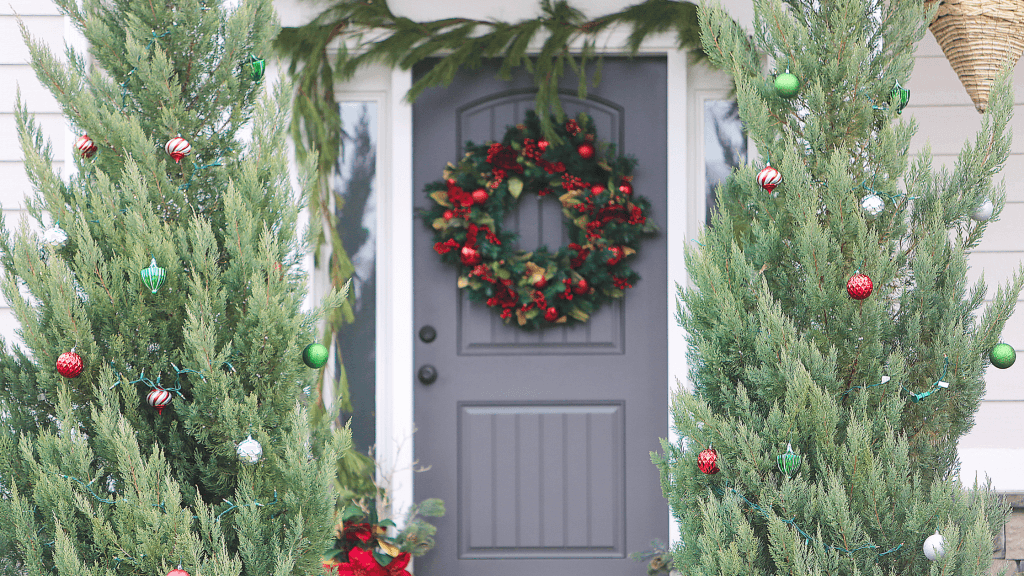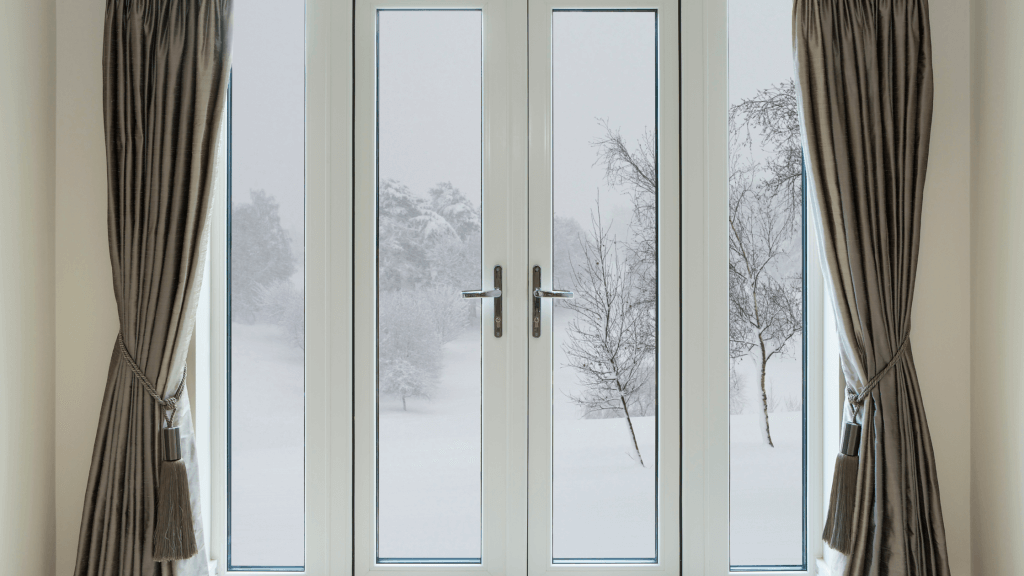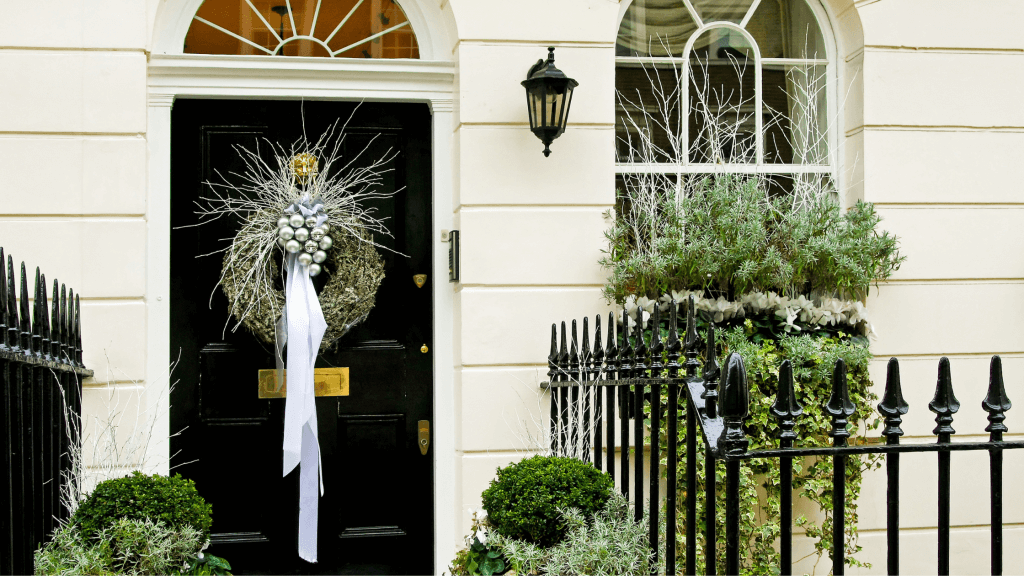As the days shorten and the air turns crisp, it’s time to prepare your home for the colder months. Here in the UK, winter can bring its fair share of wind, rain, and frosty mornings. But by taking inspiration from top lifestyle content creators and following our simple steps, you can ensure your home (and your doors) are ready for it all.
First, Learn How To Stay Cosy In Winter
Next, Check Your Doors For Issues
Does cold weather affect doors? When it comes to creating a cosy home, doors are the best place to begin. That’s because cold weather can be problematic for both interior doors and exteriors doors; affecting the temperature within your home.
In winter, doors can warp or shrink and experience issues with stiffness. If gaps or draughts are not sorted properly, you may find your door frames become a source of chill within your home. And if not taken care of properly, door hardware can become rusty or even start to malfunction.
Discover how to fix common door problems and take a deeper dive into how to fix a sticking door by using a planer or sandpaper. Easy tasks to complete before winter rolls around.
How Do You Weatherproof Doors For Winter?
How Do You Prepare A Door For Winter?
Regular Maintenance
Inspect your doors (and windows) regularly for any gaps or signs of warping. Tighten loose screws on hinges and lubricate any moving parts. For extra insulation, especially in extreme climates, install insulating panels on the inside of your doors.
Seal The Deal
Ensure proper weather stripping is in place around your doors to create a tight seal and prevent drafts. Don’t forget letterboxes and keyholes. Invest in door seal kits (these are great for soundproofing too) or go with draught excluders for a quick fix.
Freshen up your internal doors with our clear and concise guides. Learn how to change a door handle and choose the perfect letterbox. Find out how to measure up and paint your door frames and see which door locks are best for home security.



New Season, New Doors?
If your doors are showing serious signs of wear and tear, it might be time to buy new doors online. This is a great opportunity to not only improve functionality within a property but also achieve an instant style update. Ideal if you’re having guests over the festive season.
Ready to explore your options? Breathe new life into your home with interior bifold doors, see what interior doors are in style right now and find out about the many benefits of solid core doors.

Best Interior Doors For Winter
In terms of internal doors, this is the perfect winter DIY project as it causes minimal disruption but maximum design impact. Perfect for adding modern flair to traditional properties or infusing your personality into a new build home.
Overall, solid doors are best for durability, soundproofing and energy efficiency while wooden doors provide a sense of classic elegance and natural warmth.
You may also want to look at glazed internal doors which will help increase your exposure to daylight or white internal doors which boost brightness for a light and airy feel. Consider FSC® Certified doors where possible as a kinder option to our planet.
Learn how to remove old doors safely and carefully and browse our old door upcycling ideas for some creative ways to give them a second life.

Best Exterior Doors For Winter
It’s best to install external doors during the warmer months, so this is a job to think about and book in advance.
When replacing any exterior doors, consider hardwearing and thermally efficient materials. Our bestsellers include uPVC patio doors and exterior composite doors which offer both strength and weather resistance.
Take a look at our articles on how to treat external oak doors and find out what are the best treatments for oak entrance doors to kickstart your proactive maintenance routine.
And Finally, How Do I Make Sure My House Is Ready For Winter This Year?
Keep the Chill Out
Further Weatherproofing Measures
Insulation is King
Now you’ve taken a look at your doors, it’s time to review the rest of your property. Remember: a well-insulated home is a warm home. Consider loft insulation, a significant heat saver, and cavity wall insulation for suitable properties. Thick curtains and shutters are a smart investment too.
Lag Your Pipes
Protect exposed pipes, especially those outside, with lagging – a form of insulation that prevents freezing and potential bursts.
Mind the Roof
Carefully check your roof for any loose tiles or damage that could let in the elements. A well-maintained roof keeps the warmth in and the wet out.
Be Prepared
In case of pesky power cuts, have a well-stocked emergency kit with torches, batteries, non-perishable food, and a battery-powered radio. Make it fun for little ones with string lights, blankets for dens and lots of storybooks (or a battery powered DVD player).
Cosying Up Your Nest
Create a Winter Wonderland
Warm Up the Walls
Rich, warm colours like reds, oranges, and yellows can create a feeling of warmth and comfort. Consider introducing extra winter decor ideas, painting an accent wall or adding cosy artwork.
Embrace the Crackle
If you have a fireplace, get it serviced and gather a stock of firewood. There’s nothing quite like a crackling fire to create a warm and inviting atmosphere.
Layer Up
Rugs and throws add instant warmth and texture to your living space. Opt for natural fibres like chunky wool, soft woven cotton or sheepskin for maximum cosiness.
On a strict budget? Take a look at these tips on how to keep warm in winter cheaply, curated by the British Red Cross.

Sensory Delights
Take good care of your houseplants and fill your home with comforting scents like cinnamon, vanilla, or pine. Scented candles or diffusers can add a touch of luxury. It’s also an excuse to bake some delicious winter treats.
Stay Toasty
Don’t forget the power of hot drinks! Make a pot of tea, coffee, or hot chocolate to warm you up from the inside out. Hot water bottles are another great addition to your winter kit.
Let There Be Light
As daylight hours diminish, invest in lamps with warm-toned bulbs. String lights or fairy lights can add a touch of magic. This is also where glazed doors get their moment to shine; allowing natural light (the best kind of light) to flood throughout your home.
Learn how to strategically position glazed doors to get the most natural light throughout your home at different times of day and find out about which are the best window coverings for patio doors.
How Do I Prepare For Colder Months?
Experience All The Festive Feels
Take some time to get prepared and transform your home into a haven from the chill. Once you’ve weatherproofed your doors and checked your home for any potential issues, cosy season can truly begin. Snuggle up with a good book, enjoy a warming drink, and relish the wonderful atmosphere you’ve created… all winter long.
Follow Vibrant Doors on Instagram for more interior design inspiration and explore our collection online. Experience friendly customer service and super-fast delivery plus discover exclusive special offers to keep projects under budget. Perfect if you’re planning a winter home makeover.






